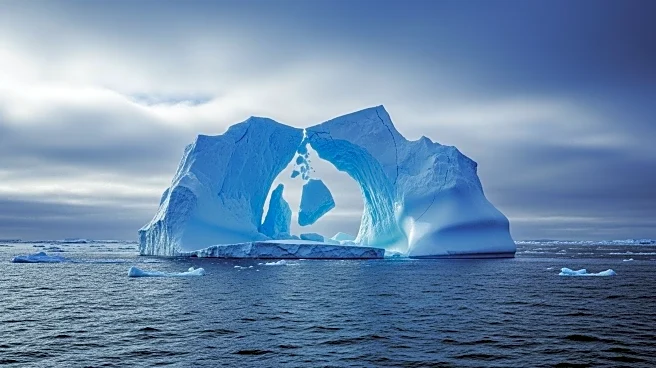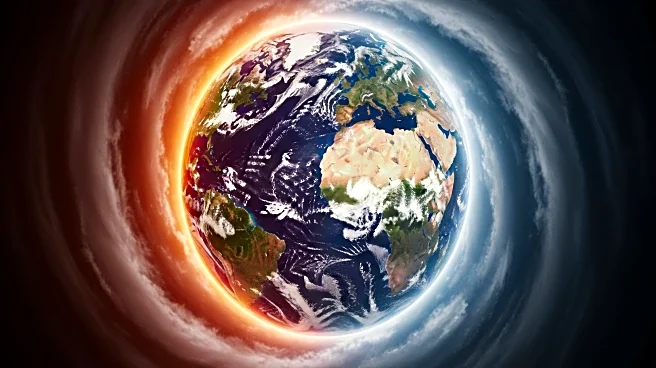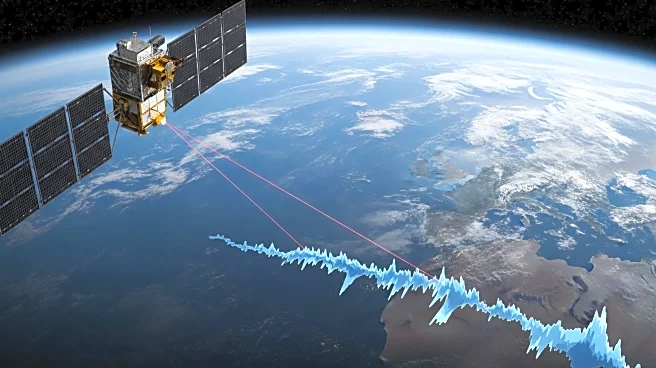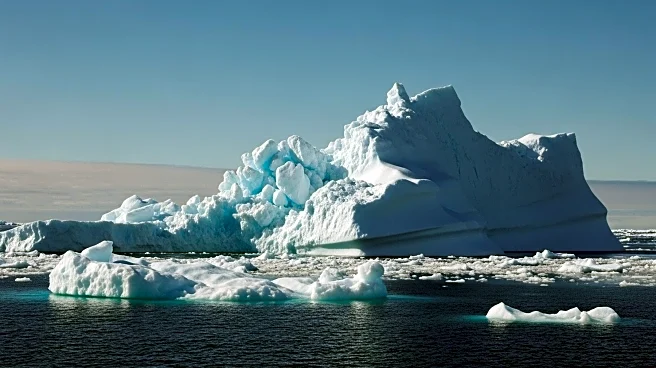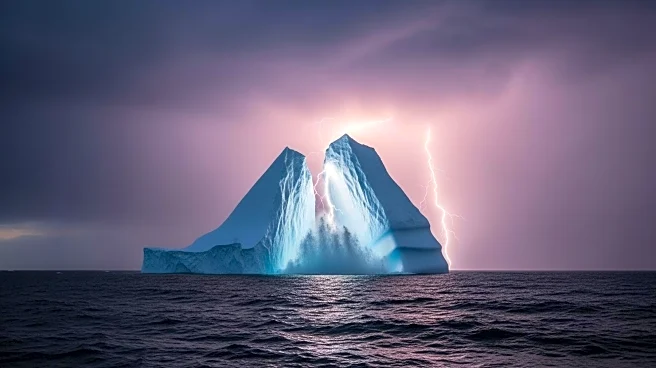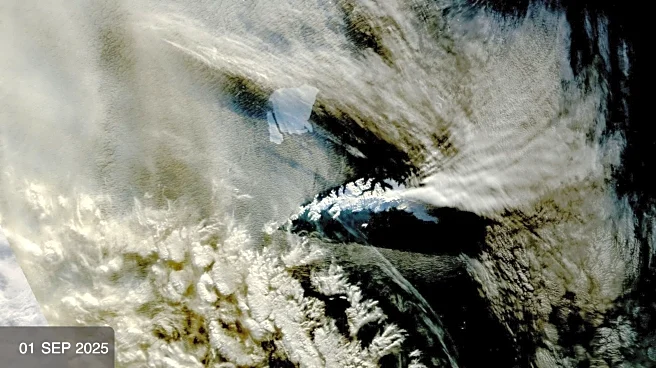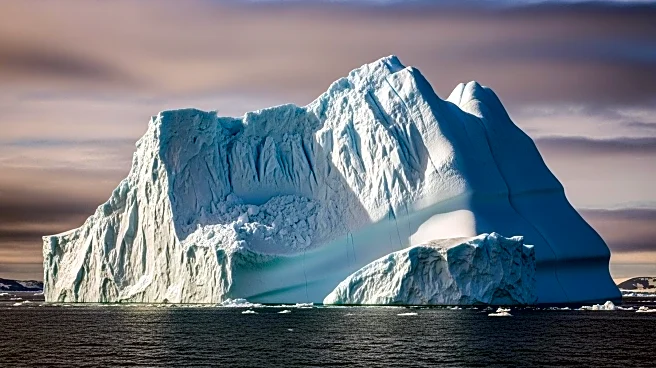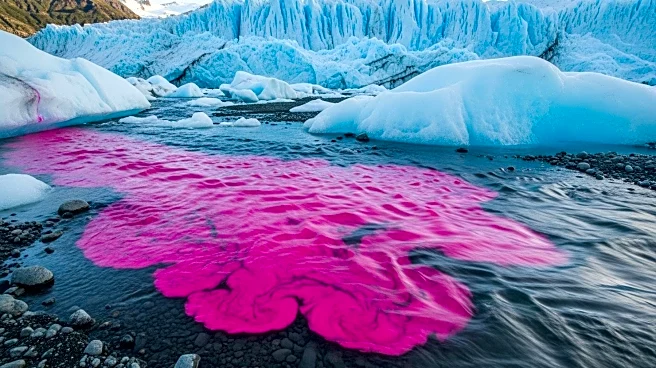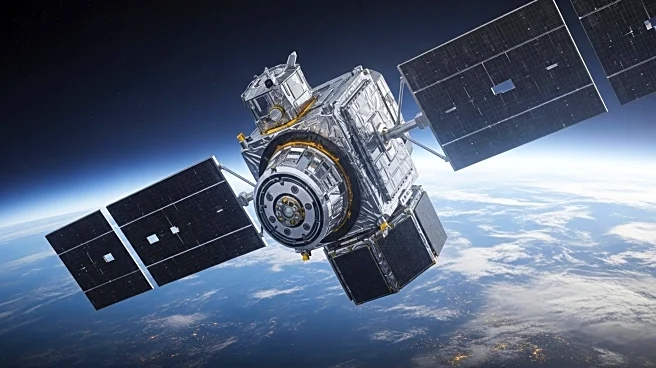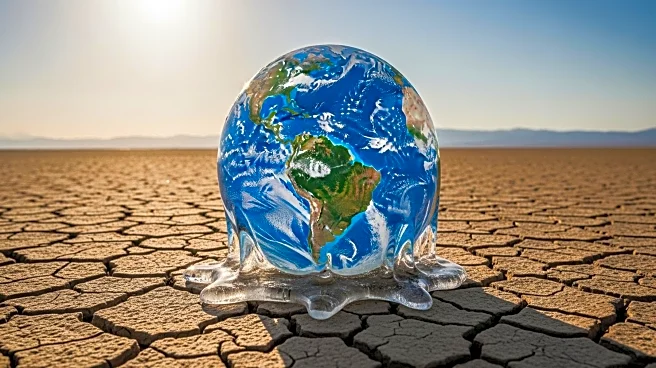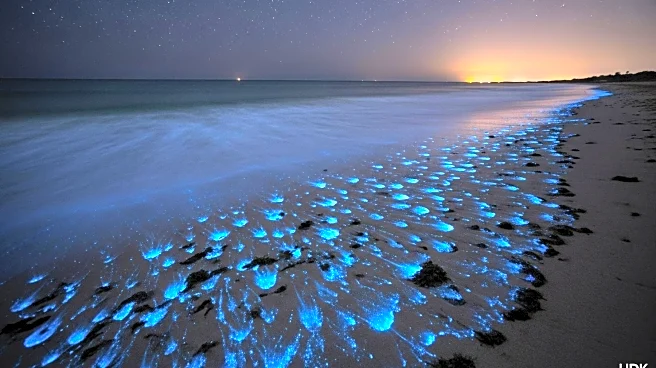What is the story about?
What's Happening?
The world's oldest and largest iceberg, A23A, is rapidly disintegrating in the South Atlantic Ocean. Originally calved from the Filchner-Ronne ice shelf in Antarctica in 1986, A23A has been tracked by scientists for nearly 40 years. It has been the largest iceberg multiple times, despite being overtaken by larger, shorter-lived icebergs. The British Antarctic Survey (BAS) has reported that A23A is breaking into several large chunks, now measuring approximately 1,700 square kilometers, akin to the size of Greater London. The iceberg's journey has been unusual, having been grounded twice in the Weddell Sea before finally freeing itself in 2020. It drifted north, where warmer waters are causing it to break apart rapidly.
Why It's Important?
The disintegration of A23A is significant for scientific research and environmental understanding. As the iceberg breaks apart, it provides an opportunity for scientists to study the impact of large icebergs on oceanic environments. The mixing of fresh water from the iceberg with salt water can affect carbon levels in the ocean, offering insights into ecological changes. This research is crucial for understanding mega glaciers and their role in controlling sea level rise over the long term. The data collected from A23A's path will contribute to future scientific endeavors aimed at mitigating climate-related impacts.
What's Next?
As A23A continues to disintegrate, it will eventually become too small to track via satellite. Scientists will focus on analyzing samples from the environments affected by the iceberg's journey. This research will help in understanding the processes governing large icebergs and their environmental impacts. The findings could inform strategies to address sea level rise and other climate-related challenges in the future.
Beyond the Headlines
The breakup of A23A highlights the natural lifecycle of icebergs, which has been occurring for millennia. While not directly linked to climate change, the event underscores the importance of studying natural phenomena to better understand environmental processes. The iceberg's journey and eventual demise offer a unique opportunity to explore the interactions between icebergs and marine ecosystems, potentially influencing future climate models and conservation efforts.
AI Generated Content
Do you find this article useful?
